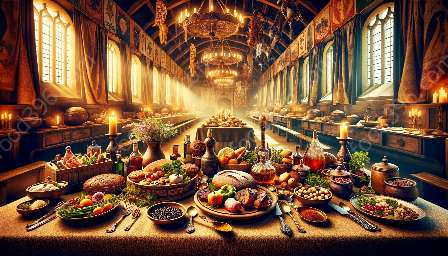During medieval times, the intersection of dietary restrictions and religious influences had a profound impact on the development of medieval cuisine. This period in history saw a complex relationship between food, culture, and faith, which continues to shape our understanding of cuisine history. To truly grasp the culinary traditions of medieval Europe, it is essential to delve into the intricate interplay of dietary limitations and religious beliefs that influenced the food choices and culinary practices of the time.
The Role of Religion in Shaping Medieval Food
Religion played a central role in influencing the dietary habits of medieval societies. The religious prescriptions and proscriptions profoundly impacted the types of food consumed and the manner in which they were prepared and shared. In medieval Europe, Christianity was the predominant religion, and its influence permeated all aspects of daily life, including food consumption. The Christian calendar, with its numerous fast days and feast days, set the rhythm for the culinary practices of the medieval populace.
The Church's Influence on Dietary Restrictions
The Catholic Church, in particular, established a set of dietary restrictions and guidelines that regulated the consumption of food throughout the year. These regulations encompassed periods of fasting, when certain types of food, such as meat and dairy products, were prohibited, as well as feast days, during which an abundance of food was enjoyed to celebrate religious occasions.
Throughout the year, various seasons and religious festivals dictated the availability and consumption of specific foods. For example, the Lenten season, a period of fasting and abstinence, was a significant influence on medieval food. During Lent, meat was forbidden, leading to an increased reliance on fish and seafood in the diet.
Regional Variations in Religious Dietary Practices
While Christianity was the predominant religion, there were numerous regional variations in religious dietary practices across medieval Europe. The dietary customs of Catholics differ from those of Orthodox Christians and Jews. Each religious community had its own set of dietary laws and customs that influenced the culinary landscape of the region. This diversity resulted in a rich tapestry of culinary traditions that reflected the religious and cultural complexities of medieval societies.
The Impact of Dietary Restrictions on Culinary Practices
The dietary restrictions imposed by religious practices had a significant impact on the culinary techniques and ingredient choices of medieval cooks. In the absence of meat during fasting periods, innovative methods of preparing fish and plant-based dishes emerged. This led to the development of unique recipes and cooking styles that are still celebrated in modern cuisine.
Preservation Techniques
Given the fluctuating availability of certain foods due to religious restrictions, medieval cooks developed various preservation techniques to ensure a steady supply of ingredients throughout the year. These methods included salting, smoking, pickling, and drying, which allowed food to be stored and consumed during periods of scarcity.
The Advent of Culinary Innovation
The limitations imposed by religious fasting periods spurred culinary creativity and innovation. Cooks experimented with a wide array of herbs, spices, and alternative sources of protein, giving rise to new flavor combinations and cooking methods. This period saw the exploration of exotic ingredients brought back from the Crusades, contributing to the diversification of medieval cuisine.
The Intersection of Medieval Cuisine History and Religious Influences
Understanding the intertwined relationship between dietary restrictions and religious influences is crucial to comprehending the evolution of medieval cuisine history. The culinary practices of the past were deeply intertwined with religious beliefs and rituals, shaping the way food was cultivated, prepared, and consumed.
Culinary Traditions and Rituals
Religious influences permeated not only the types of food consumed, but also the rituals and ceremonies surrounding meals. The act of feasting and fasting was imbued with religious meaning, and communal dining was often a reflection of religious fellowship and social hierarchy.
Legacy of Religious Influences in Modern Cuisine
The impact of religious influences on medieval food continues to reverberate in modern culinary practices. Many traditional dishes and culinary techniques have their roots in the religious dietary customs of the Middle Ages. The preservation methods, flavor profiles, and seasonal cooking associated with medieval cuisine remain influential in contemporary gastronomy.
Exploring the Culinary Legacy of Medieval Europe
The multifaceted interplay between dietary restrictions and religious influences on medieval food has left an indelible mark on the culinary history of Europe. By delving into the complex relationship between food and faith in medieval times, we gain a deeper appreciation for the rich tapestry of flavors, techniques, and cultural significance that characterize medieval cuisine.
As we navigate the intricate pathways of medieval culinary history, it becomes evident that the dietary restrictions and religious influences of the time ultimately shaped the diverse and captivating culinary traditions that continue to inspire and enrich our modern gastronomic landscape.

